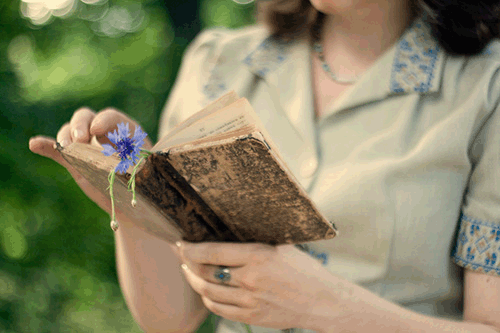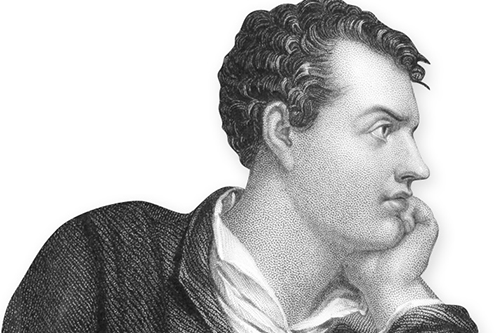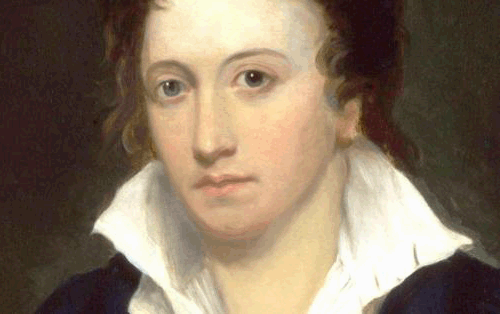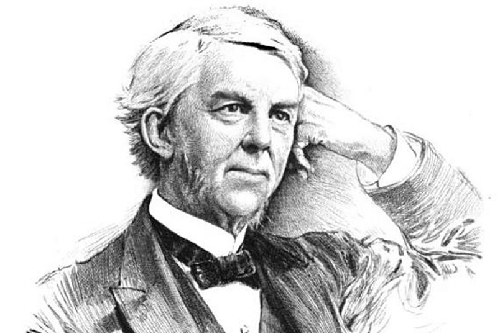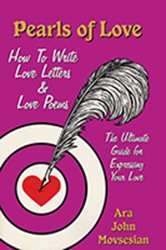

- HOME
- LOVE & ROMANCE RESOURCES
- All Resources
- Valentine's Day Love Poems
- Ready To Use Love Poems
- Love Poems From The Web
- Pre-written Love Letters
- Love Poem Basics
- 89 Ways to Say "I Love You"
- Romantic Text Message Terms
- Greeting Card Poems
- Special Ocassion Notes
- Pearls of Love Romantic Cards
- Love & Romance Quotes
- Word Expressions
- Greeting Card Art
- WEDDING RESOURCES
- LOVE & ROMANCE RELATIONSHIPS
- LOVE & ROMANCE SPECIAL SERVICES
- LOVE & ROMANCE SHOPPES
|
|
A review of the elements of poetry can help you express your love in a special and unforgettable way.The basic elements presented here will teach you how to write powerful Love Poems that will make a lasting impression on the one you love!Copyright © 1983 Ara John Movsesian (Excerpt from Pearls of Love: How to Write Love Letters and Love Poems) |
|
|
|
Poetry and RhythmMost poetry has rhythm, and rhythm is achieved by emphasizing or deemphasizing certain syllables in the words used in the lines of the love poem. The syllables, themselves, are then grouped into two or three syllable units called "feet". Examples of different types of "feet": (note: all underlined syllables are emphasized) [My love ] [ for you ] [ will al ] [ ways be, ] The above feet in [ ] brackets are called "iambs" because they are each composed of two syllables with the second syllable of each foot emphasized [ Slow ly ] [ soft ly ] [ and so ] [ gent ly ] The above feet in brackets are called trochees" because they are each composed of two syllables with the first syllable of each foot emphasized. [ Sweet heart ] [ thou art ] [ al ways ] [ at heart ] The above feet in brackets are called "spondees" because they are each composed of two syllables with both syllables of each foot emphasized. [ Self res pect ] [ is a chieved ] [ when one leaves ] [ lust and greed ] The above feet in brackets are called "dactyls" because they are each composed of three syllables with the first syllable of each foot emphasized. [ Dis res pect ] [ can not be ] [ for a love ] [ to be free ] The above feet in brackets are called "anapests' because they are each composed of three syllables with the third syllable of each foot emphasized. Rhythm, as you can see from the above, depends on emphasized and deemphasized syllables which make up "feet." Taking this a step further, a "line" or "verse" of a poem is made up of one or more "feet." |
|
Iambic Tetrameter(4-meter) [ My love ] [ for you ] [ will al ] [ ways be, ] This verse has four iambic feet. Iambic Trimeter (3-meter) [ I kiss ] [ you in ] [ my dreams ] This verse has three iambic feet. Iambic Pentameter (5-meter) [ Thus soon ] [ I'll need ] [ the warmth ] [ of your ] [ em brace ] The variations are almost endless! Trochaic Trimeter, Trochaic Tetrameter, Anapestic Monometer, Anapestic Tetrameter, and on and on ........ Poetry and RhymeLove poetry does not always have to rhyme. For example, there is a type of poetry called "Free Verse." It's almost like prose, except that the words flow with imagery and become poetic in spite of the absence of rhyme. Example: To me, you are a delicate Rose Whose beauty never dies When pressed between the pages Of a good book; Or caught between the pages Of my mind. - Unknown
|
|
Throughout the ages, however, rhymed love poetry has been the prevalent form of this type of expression. Rhyme is achieved when sounds are repeated within a verse or at the end of two different verses. For example, we present a "couplet" which is composed of two end-rhymed verses: I have not seen you for many days, And truly I've missed you in countless ways. The couplet is the smallest verse grouping more commonly refered to as a "stanza." There are many different patterns of poetry which depend on the number of verses as well as the end rhyming pattern used. Here are examples which you can refer to when writing your own love poems; Triplet (3 verses) a) She opened her eyes, and green b) They shone, clear, like flowers undone a) For the first time, now for the last time seen. - D. H. Lawrence Quatrain (4 verses) a) A ruddy drop of manly blood b) The surging sea outweighs; c) The world uncertain comes and goes, b) The lover rooted stays. - Ralph Waldo Emerson Quintet (5 verses) a) Hail to thee blithe spirit, b) Bird thou never wert a) That from heaven, or near it, b) Pourest thy full heart b) In profuse strains of unpremeditated art. - Percy Bysshe Shelly Sestet (6 verses) a) Good-bye, proud world! I'm going home: b) Thou art not my friend, and I'm not thine: a) Long through the weary crowds I roam; b) A river-ark on the oceanbrine, a) Long I've been like the driven foam; a) But now, proud world! I'm going home. - Ralph Waldo Emerson Septet (7 verses) a) The flower that smiles today b) Tomorrow dies; a) All that we wish to stay b) Tempts and then flies: c) What is this world's delight? c) Lightening that mocks the night, c) Brief even as bright. - Percy Bysshe Shelly |
|
Rhyme (Continued) Octave (8 verses) a) Thou art a female, Katydid! b) I know it by the trill c) That quivers through thy piercing notes, b) So petulant and shrill; d) I think there is a knot of you e) Beneath the hollow tree, - f) A knot of spinster Katydids, - e) Do Katydids drink tea? - To an Insect by Oliver Wendell Holmes Nine-Line stanza (9 verses) a) Fair Daffodils, we weep to see b) You haste away so soon; c) As yet the early rising sun b) Has not attained his noon. d) Stay, stay, d) Until the hasting day c) Has run f) But to the even-song; a) And having prayed together, we f) Will go with you along. - To Daffodils, Robert Herrick Ballad stanza (Alternating verses of Iambic Trimeter and Iambic Tetrameter) a) So far apart are we again (Iambic Tetrameter) b) It is not fair I say (Iambic Trimeter) a) For I was dealt a rotten hand, (Iambic Tetrameter) b) And now I have to pay. (Iambic Trimeter) - Ara John Movsesian |
|
a) The Reverend Henry Ward Beecher a) Called a hen a most elegant creature. b) The hen pleased with that, b) Laid an egg in his hat - a) And thus did the hen reward Beecher! - Oliver Wendell Holmes Sonnet (14 verses - rhyming patterns are varied) (a) Shall I compare thee to a summers day? (b) Thou art more lovely and more temperate; (a) Rough winds do shake the darling buds of May, (b) And summer's lease hath all too short a date: (c) Sometime too hot the eye of heaven shines, (d) And often is his gold complexion dimm'd; (c) And every fair from fair sometime declines, (d) By chance or nature's changing course untrimm'd; (e) But thy eternal summer shall not fade, (f) Nor lose possession of that fair thou owest; (e) Nor shall death brag thou wander'st in his shade, (f) When in eternal lines to time thou grow'st: (g) So long as men can breathe, or eyes can see, (g) So long lives this, and this gives life to thee. - Sonnet XVIII by William Shakespeare There are many other variations which we will not discuss at this time. |
|
|
ORDER YOUR COPY HERE (From Amazon.com) Click Here to order Pearls of Love Kindle Edition (ebook) Click Here to order Pearls of Love ePub Format (ebook) Click Here for a Video on Pearls of Love |
|
|
|
|


Legal | Privacy | Your California Rights | Advertising Choices | Contact Us
Copyright © 1995-2020 - Loveandromance360.com - The Love & Romance Home Page(SM) - All Rights Reserved

